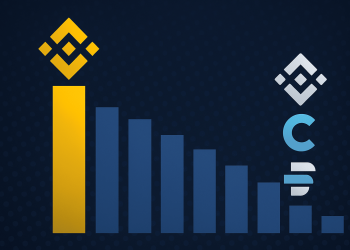The rising complexity of the mining process can be seen as Bitcoin’s mining difficulty level attains 101.65 trillion. The 3.94% increase in this metric was adjusted for every 2,016 blocks. Due to increased computational requirements, miners will continue evolving to make the Bitcoin network secure and sufficiently profitable.
Mining Power Surges Mean Intensifying Competition
The difficulty surge recently echoes a growing rivalry of miners, as evidenced by a rise in hash power and progress in mining hardware. The network’s hashrate is stable at 724.07 EH/s as of Nov. 5 and down from an all-time high of 766 EH/s. This slight drop is partly because mining here is much more complex. Therefore, it tells us that a miner may have difficulty adding a new block in this environment.
The security caused by all this is ensured, but also raises the mining barrier. However, as the network requires 101 trillion hashes per block, only the best-equipped miners can compete. Therefore, many industry players have been trying to find innovative solutions to optimize efficiency and control operating costs.
Miner Incentives are not dependent on Hashprice or Bitcoin Price
The price of each petahash of hash power, or hashprice, has recently fallen to $42.50 but has since risen to $44.03. At roughly $70,000, Bitcoin’s price is just high enough to provide a reprieve for miners while its price keeps climbing this hash price uptick. However, if Bitcoin’s price does not rise, difficulty levels may oust less efficient operations out of the market.
For miners to continue to profit, hashprice and network difficulty must stay balanced and stabilize. This constant need for resource-hungry calculations forces the miners to keep adjusting. If Bitcoin prices remain the same, miners will be incentivized to meet these higher requirements.
Difficulty Adjustment Supports Network Security
To keep Bitcoin secure, the difficulty adjustment discourages attempts by bad actors to manipulate the network for their gain. The adjustment requires enormous computational resources, making the network resistant to tampering. As the competition gets more intense, only the most resourceful mining operation can keep up, and so will build a more robust, more decentralized network.
This latest increase in difficulty shows the increasing growth of mining power to support an increasingly stable network. This adjustment also verifies the reliable behaviour of Bitcoin’s protocol, which continuously corrects and adjusts to maintain an approximately 10-minute block discovery rate. As a result, even with more demanding requirements, the Bitcoin network is still secure and reliable in its ability to serve users and mine.
However, with more difficult conditions to work with, mining companies need to accelerate investments in energy efficiency and advanced hardware. With increasing energy consumption, many operations now explore renewable energy sources that lower costs and eliminate environmental impacts. This strategic shift helps to support profit margins and fits in with much broader sustainability goals in the industry.
Economies of scale allow more extensive operations to afford cutting-edge technologies and energy solutions. Those pushing some smaller miners to consolidate or collaborate with larger entities may be helpful, but they also help smaller miners keep pace. With competition tightening, miners compete harder and harder to ensure the longevity and competitiveness of the high-volatility market.
Stay connected with TurkishNY Radio by following us on Twitter and LinkedIn, and join our Telegram channel for more news.




























































































![BitTorrent [New]](https://s2.coinmarketcap.com/static/img/coins/64x64/16086.png)



















